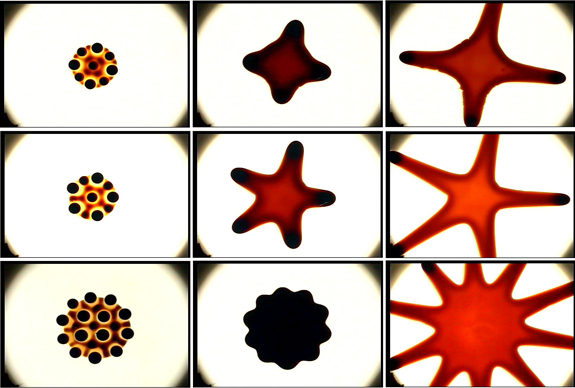Starburst of a Magnetic Drop
Ching-Yao Chen
W.-L. Wu
National Chiao Tung University
Hsinchu, Taiwan
Jose A. Miranda
Universidade Federal de Pernambuco
Recife, Brazil

Evolutions of various sizes subjected to an interaction of perpendicular and radial field.
We report an experimental study of an interfacial pattern formation which occurs during the spreading of an immiscible thin ferrofluid drop subjected to a radial magnetic field. A magnetically induced selection mechanism is illustrated by typical time evolutions (from left to right) of a drop of various initial diameters (demonstrated on different rows).First, a perpendicular field is applied generating an array of numerous sub-scale droplets as shown in the first column. Soon after this, the perpendicular field is turned off, and the radial field is immediately switched on. This leads to the collapse of the tiny peaks, followed by the coalescence of the sub-scaled droplets, creating a symmetrically perturbed structure. Subsequently, fingers start to spread out due to the action of a radial magnetic force. This demonstrates the capability of tuning the ultimate number of growing fingers by prescribing a proper initial perturbation.
This work is funded by the National Science Council of Taiwan (Republic of China).
Reporters and Editors
Reporters may freely use these images. Credit: Chen and Wu, National Chiao Tung University, Taiwan; Jose A. Miranda Universidade Federal de Pernambuco.
